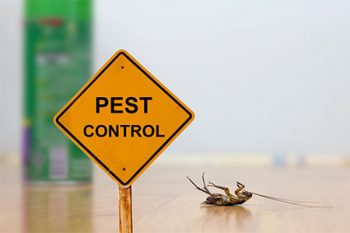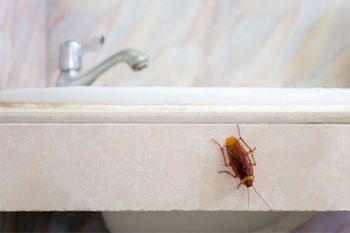Species of Cockroaches


Cockroaches are among the most common pests. Based on fossil evidence, cockroaches are known to have been present on earth for nearly 350 million years. Their sizes vary considerably; some species are up to several inches long. Some biologist consider insects to be one of the most successful groups of animals ever to inhabit this planet, and cockroaches (often referred to as roaches) are one of the most adaptable and successful insect groups.
They have been able to survive many changing environments over millions of years. There are approximately 3500 species of cockroaches worldwide, with about 70 species found in the United States. Their presence in nearly every part of the world and in a wide range of habitats demonstrates that cockroaches are truly an outstanding success story in nature.
Many of the same outstanding biological characteristics that make them so successful in nature can also make them some of the most difficult pests to control. Cockroaches, especially German cockroaches, are some of the most commonly encountered household insect pests in much of the United States, and many other areas worldwide. Fortunately, effective control technology and pest management understanding are now available to allow consistently high levels of cockroach control for most species and in most situations.
Types of Cockroaches
Only a few of the cockroach species found in the United States routinely enter and infest our dwellings. The most common of these are the
- German Cockroach
- American Cockroach
- Oriental Cockroach
- Brown-Banded Cockroach
- Smoky Brown Cockroach
- Australian Cockroach
- Woods Cockroach
- Brown Cockroach
- Field Cockroach
- Asian Cockroach
Of these species, the first five probably represent 95% of all cockroach management concerns. In some parts of the country, one species may be more prevalent than another. Certain other species may infest homes or other buildings but will generally be found in a much-localized situation or only under other unusual circumstances. The breeding capabilities of roaches vary greatly depending on the species. Suffice it to say that their reproductive abilities are substantial. Left untreated, one roach can lead to a full infestation in a few months.
Have concerns about other pests infesting your home? We offer termite inspections and control services as well.
What Causes Cockroaches?
Cockroach Damage and Health Implications
The presence of cockroaches is often detected by their damage or by the fecal matter called frass, they deposit. These clues can aid in diagnosing a cockroach problem. Cockroaches may eat such things as glue or paste (especially from animal-based materials), starch, certain colors of dyes, and any food products that humans eat. As a result, items such as stamps, envelopes, bindings of older books, draperies, occasionally wallpaper, food preparation areas, food storage areas, and open food items may show signs of feeding. The size of the mandible marks and the apparent degree of vigor with which the insects have fed can be indications of the type of cockroach that did the damage. The size and shape of fecal droppings are also clues to cockroach species involved.
The most important aspect of cockroach damage is a result of their habit of feeding and harboring in damp and unsanitary places, such as sewers, garbage disposals, areas of kitchens, areas of bathrooms, and storage areas indoors. Filth and germs from these sources are spread by the cockroaches onto food supplies, food preparations, surfaces, dishes, utensils, and other surfaces. Cockroaches contaminate far more food than they eat. Diseases transmitted as a result of these habits include various forms of food poisoning or gastroenteritis.
These same habits, along with the smell imparted by any significant level of infestation, are why people are so disgusted and repelled by the mere presence of cockroaches. For many people, personal disgust and the social stigma attached to the cockroaches result in a complete lack of tolerance for any cockroaches in their home or elsewhere.
Are Cockroaches Dangerous?


Cockroaches are a source of health-threatening allergens and can even trigger life-threatening asthma attacks. However, studies have found that some people have a less severe attitude about cockroaches, such that low levels of cockroach presence and an occasional sighting may be acceptable. These attitudes, or tolerances, about cockroach presence, may be acceptable indoors, while some low or moderate levels may be acceptable in the landscape. In either case, a carefully considered and executed management program will be necessary.
Cockroaches produce an odorous secretion from various points in their bodies, and these secretions can affect the flavor of foods. When the cockroach population is high, these secretions may result in a characteristic odor in the general region of the infestations. Disease-producing organisms, such as bacteria, have been found on cockroach bodies. Although sever digestive diseases have been transmitted experimentally, different forms of gastroenteritis appear to be the principal disease transmitted by cockroaches.
These include food poisoning, nausea, abdominal cramps, vomiting, diarrhea, dysentery, and other illnesses. The organisms causing this disease are carried on the legs and bodies of cockroaches forage. Cockroaches also carry a wide variety of protozoa and other microorganisms inside their bodies, some of which may occasionally be involved in the spread of disease to humans. Cockroach excrement and cast skins also contain a number of allergens to which many people exhibit allergic responses, such as skin rashes, watery eyes, and sneezing.
For some very allergic people, and particularly for those who have a chronic lung disease such as asthma, allergic attacks to cockroach allergens can be very serious and even life-threatening. All forms of contact with cockroaches should be kept to a minimum. For the most part, however, cockroaches usually are not associated with severe illnesses or disease outbreaks, though they are nearly universally detested.
How to Get Rid of Roaches
To control German roaches, we utilize different gel baits. The bait is injected in small pinhead size placements into the cracks and crevices that the German roach uses for harborage. The secret to effective German roach control is bait placement. Our certified exterminating technicians are highly trained and knows just where to place the bait strategically.
The German roaches consume the bait then die. The babies hatch from the eggs, consume the bait, and die. The circle of life is broken, and the infestation is exterminated. Follow-up services are needed to replenish all bait that is consumed. Depending on the environment, periodic treatment will ensure the infestation does not reoccur.
Sewer roaches can come from the outside in or from the sewer system that is connected to your home. Outside, the placement of granule bait is the most effective solution. The bait must tolerate high temperate and moisture. If the bait is placed correctly, the roaches will find it, eat it and die. If the roaches are coming from the sewer system, then you may need to have the city treat the public lines.
Cockroach Control Near Me
The lines that connect your home to the public system can be treated by blowing dust down the vent pipes and through cleanouts that are preset on your property. At Anteater Exterminating, we can identify the treatment needs specific to your property and take action to eliminate the sewer roach infestation. Periodic follow-up pest treatments will ensure sewer roaches do not infest your property again. Call us today to get started!



